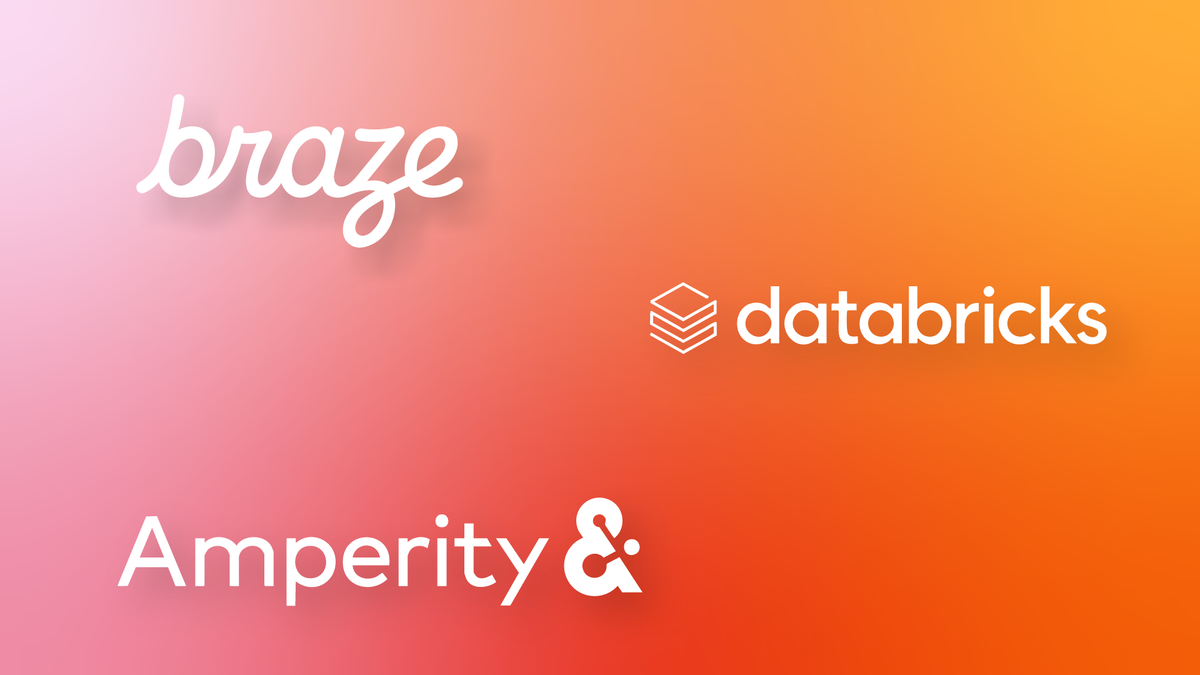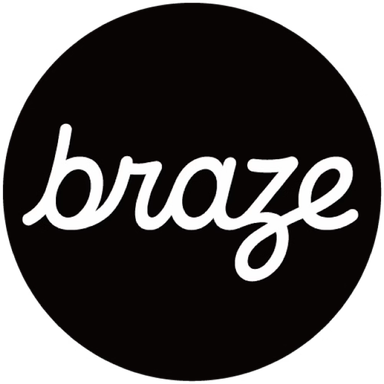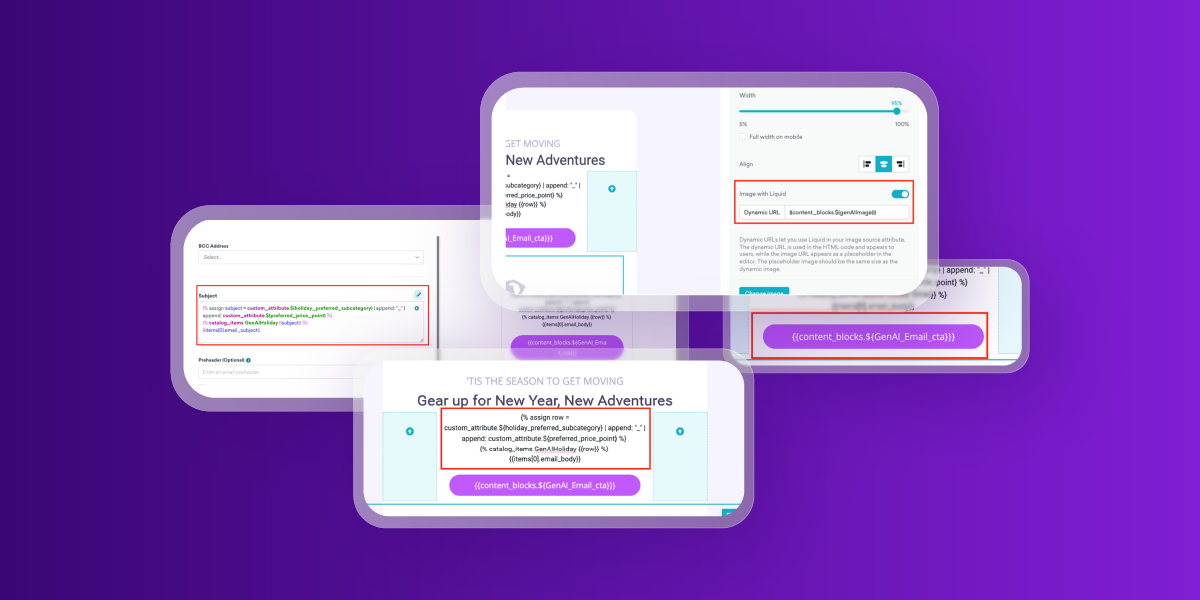1:1 AI-Powered Holiday Gifting Campaigns: How Amperity, Braze, and Databricks Make It Possible
Published on January 17, 2025/Last edited on January 17, 2025/5 min read


Team Braze
Consumers may well breathe a sigh of relief once the winter holidays have passed, but retail marketers know very well that the next gifting season will be upon us sooner than you’d think. That’s why there’s no time like the present to work toward providing standout customer experiences—especially since the holiday season is often a make-or-break time of year, with the revenue generated then accounting for a significant proportion of retailers’ annual performance.
Thankfully, 2024 was a good year for holiday shopping. According to Mastercard data, holiday spending increased: Online sales were up 6.7% over 2023, in line with early predictions from the National Retail Federation. But consumers have many options when they decide to buy—so retailers need to be thoughtful about how they encourage customers to purchase from their brand.
Priceless: The value of personalization over the holidays
It’s no secret that customers are inundated with marketing offers during the holidays. Email volume typically rises, but so does consumer awareness. According to Forbes, 69% of consumers pay more attention to email during the holiday season.
Even so, the less consumers have to hunt for what they want, the better. Complete catalogs of toys may be fun for kids to page through, but most parents want to skip the browsing and jump straight to the purchase. Here’s where personalization makes the difference, by delivering the most compelling and relevant product offerings to each individual customer.
Imagine creating 1:1 customized holiday gift-giving guides that focus on the gift-giving categories a consumer is most interested in, based on their previous search and purchase history. It’s not only possible, but relatively easy to make possible through the powerful combination of Databricks, Amperity, and Braze.
How Amperity, Braze, and Databricks collaborate to support seamless 1:1 personalization
Generative AI now enables brands to create resonant gift-giving guides, hyper-tailored to consumer interests and price sensitivity. The process begins by using Databricks to create an AI model that leverages each user’s data, using Customer360 data provided by Amperity. In the Databricks AI Playground, your team can produce creative content via simplified prompt engineering.
Teams can use a drop-down to select pre-installed models within the Databricks environment or select multiple models to run side-by-side to compare outputs from a shared prompt. Databricks allows you to enter specific system and user prompts for content and then continue to refine those prompts until you have the results you’re after. (Check out this blog post for an example of this process in action.)
Once your prompts are defined and refined, you can build an automated workflow to create creative copy at scale—including an AI-generated subject line and email content.

The next step is to leverage the Databricks/Amperity integration to pass those recommendations to Braze. From a more technical perspective, this is how that process works in Braze:
- Amperity syncs user profiles to Braze, including attributes for the preferred holiday subcategory and price point.
- Braze Cloud Data Ingestion (CDI) is used to pick up the content from the Databricks view and sync the AI-generated campaign copy into a Braze Catalog.
- Within the email campaign in Braze, Liquid personalization references the values within the Braze user profile's "holiday_preferred_subcategory" and "preferred_price_point" attributes, synced by Amperity, to create the relevant catalog row ID and pull in each user’s personalized subject and body copy.
- The Braze platform’s Connected Content dynamic personalization tool is used to make a request to Amperity's Profiles API to get the most up-to-date version of the user’s loyalty points and personalize the call to action (CTA).
- Use BrazeAIᵀᴹ features like Intelligent Timing to further perfect and personalize each user’s experience.
The end result? Braze powers messages built around the content that each customer is most likely to engage with.
Time is money
When consumers are served products they’re looking for, the decision to make a purchase becomes easier. That means that the time you invest now in personalization can go a long way toward providing the best customer experience and meaningfully influencing your brand’s bottom line. Plus, if you can hook the holiday shopper with truly personalized content, you also have the opportunity to engage them to return, extending your campaigns long past the season.
Interested in building on your holiday gains? Learn how to win the post-holiday period with our exclusive guide.
Forward Looking Statements
This blog post contains “forward-looking statements” within the meaning of the “safe harbor” provisions of the Private Securities Litigation Reform Act of 1995, including but not limited to, statements regarding the performance of and expected benefits from Braze and its partnerships and products. These forward-looking statements are based on the current assumptions, expectations and beliefs of Braze, and are subject to substantial risks, uncertainties and changes in circumstances that may cause actual results, performance or achievements to be materially different from any future results, performance or achievements expressed or implied by the forward-looking statements. Further information on potential factors that could affect Braze results are included in the Braze Quarterly Report on Form 10-Q for the fiscal quarter ended October 31, 2024, filed with the U.S. Securities and Exchange Commission on December 10, 2024, and the other public filings of Braze with the U.S. Securities and Exchange Commission. The forward-looking statements included in this blog post represent the views of Braze only as of the date of this blog post, and Braze assumes no obligation, and does not intend to update these forward-looking statements, except as required by law.
Related Tags
Releated Content
View the Blog
Enterprise generative AI: Transforming data, decisions, and customer experiences

Team Braze

Omnichannel personalization: Delivering consistent, connected customer experiences

Team Braze

Are you AI-savvy enough to survive? A wake-up call for CMOs
